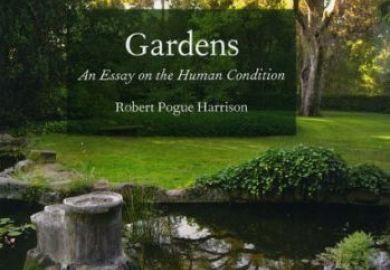A garden is a lovesome thing. So too is a nice book about gardens, and this is a very nice book indeed, handsomely designed, generously illustrated and packed full of information and detail. Its stated aim is “to explore what early modern gardeners were doing in their gardens”, to which end it offers chapters on gardening books; social context; Elizabethan gardens; 17th-century gardens; who was actually doing the gardening; new design concepts; knots; garden ornaments; the problems caused by the Civil War; and, finally, the sudden influx of new plants caused by voyages of trade and exploration.
Much has been written on the great gardens of the period, but Jill Francis’ interest is more in the gardens of the gentry, such as Sir John Oglander, gardening at Nunwell on the Isle of Wight, who knew that he ought to reduce his expenditure but couldn’t resist fruit trees. He confessed in his commonplace book that he has been “so foolish as to bestowe more moneyes then a wise man would have in fflowers for the garden”. There was much to tempt him, for while everyone knows about tulip fever it is perhaps not so widely realised that crocuses, ranunculuses and anemones were all either newly, or much more widely, available, dramatically extending the season of interest of the average garden and leading to a new fashion for planting flowers.
Francis’ sensibility is less that of an art historian than of a weeder and digger, and this makes her an acute reader of the gardening manuals that start to proliferate from the mid-16th century onwards. She is, for instance, quick to spot when these are imitating classical or continental sources and therefore proffering advice not really suited to conditions in England and Wales (one wonders how readers in northern counties got on with the much-repeated guidance on growing olives). She is alert, too, to what people wrote in their copies (or how they coloured them in). She has also looked at portraits and paintings, particularly the puzzling image of the grounds at Llannerch that may or may not represent a real late-Renaissance garden created in Denbighshire by the splendidly named Mutton Davies (doubt arises because his neighbour, Sir Thomas Hanmer, informed a correspondent that he knew of no great gardens in Wales). Even if it was not real, Llannerch presumably expressed an aspiration, and what people hoped for from their gardens is something else to which Francis is sensitive, as too to the sense of guilt that attached to the shift from gardens as productive to gardens as places of pleasure and leisure.
The book traces a further cultural current arising from the growing urge to garden in a way that one might term empirical, testing the received wisdom of gardening books against how plants actually performed in real people’s Welsh and English gardens. I think that Francis could have made slightly more of the fact that gardens could also be places for the expression of faith. The possible symbolism of the garden at Lyveden New Bield, for instance, is relegated to a footnote. This is, however, a very small reservation about an intensely pleasurable read.
Lisa Hopkins is professor of English at Sheffield Hallam University.
Gardens and Gardening in Early Modern England and Wales
By Jill Francis
Yale University Press, 412pp, £35.00
ISBN 9780300232080
Published 26 June 2018
POSTSCRIPT:
Print headline: Unearthing new Edens
Register to continue
Why register?
- Registration is free and only takes a moment
- Once registered, you can read 3 articles a month
- Sign up for our newsletter
Subscribe
Or subscribe for unlimited access to:
- Unlimited access to news, views, insights & reviews
- Digital editions
- Digital access to THE’s university and college rankings analysis
Already registered or a current subscriber?







